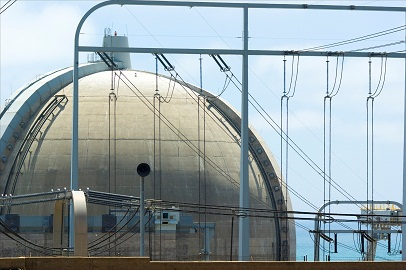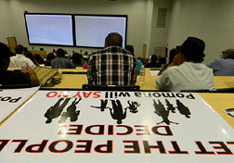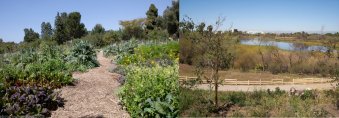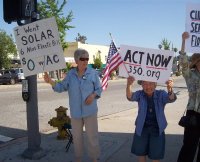| About Us | Contact Us | Calendar | Publish | RSS |
|---|
|
Features • latest news • best of news • syndication • commentary Feature Categories IMC Network:
Original Citieswww.indymedia.org africa: ambazonia canarias estrecho / madiaq kenya nigeria south africa canada: hamilton london, ontario maritimes montreal ontario ottawa quebec thunder bay vancouver victoria windsor winnipeg east asia: burma jakarta japan korea manila qc europe: abruzzo alacant andorra antwerpen armenia athens austria barcelona belarus belgium belgrade bristol brussels bulgaria calabria croatia cyprus emilia-romagna estrecho / madiaq euskal herria galiza germany grenoble hungary ireland istanbul italy la plana liege liguria lille linksunten lombardia london madrid malta marseille nantes napoli netherlands nice northern england norway oost-vlaanderen paris/Île-de-france patras piemonte poland portugal roma romania russia saint-petersburg scotland sverige switzerland thessaloniki torun toscana toulouse ukraine united kingdom valencia latin america: argentina bolivia chiapas chile chile sur cmi brasil colombia ecuador mexico peru puerto rico qollasuyu rosario santiago tijuana uruguay valparaiso venezuela venezuela oceania: adelaide aotearoa brisbane burma darwin jakarta manila melbourne perth qc sydney south asia: india mumbai united states: arizona arkansas asheville atlanta austin baltimore big muddy binghamton boston buffalo charlottesville chicago cleveland colorado columbus dc hawaii houston hudson mohawk kansas city la madison maine miami michigan milwaukee minneapolis/st. paul new hampshire new jersey new mexico new orleans north carolina north texas nyc oklahoma philadelphia pittsburgh portland richmond rochester rogue valley saint louis san diego san francisco san francisco bay area santa barbara santa cruz, ca sarasota seattle tampa bay tennessee urbana-champaign vermont western mass worcester west asia: armenia beirut israel palestine process: fbi/legal updates mailing lists process & imc docs tech volunteer projects: print radio satellite tv video regions: oceania united states topics: biotechSurviving Citieswww.indymedia.org africa: canada: quebec east asia: japan europe: athens barcelona belgium bristol brussels cyprus germany grenoble ireland istanbul lille linksunten nantes netherlands norway portugal united kingdom latin america: argentina cmi brasil rosario oceania: aotearoa united states: austin big muddy binghamton boston chicago columbus la michigan nyc portland rochester saint louis san diego san francisco bay area santa cruz, ca tennessee urbana-champaign worcester west asia: palestine process: fbi/legal updates process & imc docs projects: radio satellite tv |
Environment:
previous page 5 next page |
single feature archives |
weekly archives
Echo Park: Mayoral candidate and City Councilmember Eric Garcetti (district 13) has somehow created the image of being a champion of the environment. Yet he's failed to support the South Central Farm (beyond lip service); he approved rezoning of a property on a wildlife corridor from three to 15 units, against the wishes of most neighbors; and recently allowed the destruction of 40 protected trees on that same land.
Meanwhile, he has also supported development in Hollywood and received money from people connected to Wal-Mart. Although he's a front runner in the mayoral race, politicians have been stopped before. In 1993, Councilman Michael Woo, who also promoted development in Hollywood, ran for Mayor but encountered major opposition from a group called Citizens for Anyone but Woo. Hopefully, history will repeat itself. Story and photos: Eric Garcetti Allows Destruction of 40 Protected Trees by Ross Plesset
While the struggle against nuclear energy and weapons has been a long one, it has been reinvigorated since the Fukushima nuclear disaster in March of last year. The quake that set off the chain reaction ultimately resulted in a nuclear meltdown and the release of radiation into both the air and the Pacific Ocean. Traces of that radiation have been discovered in fish that have reached the west coast of the United States and in the atmosphere over the western hemisphere.
In addition to the nuclear weapons laboratories operated by the University of California, two stations generate nuclear waste in California; one at Diablo Canyon, the other at San Onofre. More than six months ago, a rupture in one of the generators prompted San Onofre's closure. Officials at first denied that any radiation had been released, but were soon forced to retract their claim, although they continue to minimize the damage the toxic radiation is causing. Southern California activists have pressured municipal officials and the public utilities commission to keep the waste-generating station closed and have been successful despite intense pressure from Southern California Edison, which profits from the station. On August 20, the plant announced the layoffs of 730 workers, which is viewed as another step towards the plant's final closure and has awakened the possibility of a nuclear-free world. From the newswire: San Onofre Layoffs: Latest Sign of Nuke Plant's Demise by Michael Steinberg POMONA, California - Monday, July 16, 2012 - A city council meeting to decide the fate of a proposed waste transfer station in the city's impoverished east end became contentious as various factions interacted at a pre-meeting rally. After a long corporate presentation and an even longer public comment period, the council voted against the vast majority of the community to approve the project. Protest, including some shoving involving police, ensued. Full Story: Pomona City Council Chooses Trash Over Residents by Rockero with photos by Melissa Ayala
Jacob Gutierrez, a Tongva, has a lot on his plate right now. The last science center in the LA Unified School District is "on the chopping block" due to budget cuts in education. (LAUSD originally had six.) This facility has been a resource for everyone in the community, especially children. It contains several gardens, consisting of over 80 native plants and fruit trees. Native wildlife is drawn there, including blue butterflies. There are also over 150 animals that children can visit, all rescues. Oftentimes they have been confiscated by the U.S. Government at the southern border and would have been killed were it not for the Center.
Just up the street is the site of Shwaanga (Ken Malloy Regional Park), one of the largest Tongva villages in pre-Spanish times, a site which has been suffering from pollution in recent centuries. In pre-European times, people would travel by boat from islands including Pimu (Catalina Island) and numerous inland communities via canoelike boats plying rivers, as well as different parts of the California coast. Among other things, Shwaanga was known for its fresh water. Now the water is heavily polluted and needs to be cleaned up. Story and photos: San Pedro: Science Center Endangered/Tongva Village Site Revitalization by R. Plesset, Science Center photos by Isabel Avila On May 5, demonstrations were held world-wide to draw attention to the dire consequences and continued threats of climate change. Here in Los Angeles, banners were displayed on freeways (pictures have been posted at 350.org). Other local events happened in Pasadena; Arcadia; Palm Springs; San Diego; and in Eagle Rock, where 11 people participated in a climate vigil. Signs were displayed and flyers distributed.
Two of the participants (both residents of Eagle Rock) recently converted their homes to solar and were advocating it to passersby. The State of California still has financial incentives in place. Story and pictures: Climate Impact Day in Eagle Rock by R of the Northeast LA Radical Neighbors | | More coverage: by Jan Freed Environment: previous page 5 next page | single feature archives | weekly archives |



 Eric Garcetti Allows Destruction of 40 Protected Trees
Eric Garcetti Allows Destruction of 40 Protected Trees San Onofre Nuclear Waste Generating Station Lays Off Workers, Reopening Questioned
San Onofre Nuclear Waste Generating Station Lays Off Workers, Reopening Questioned Pomona City Council Chooses Trash Over Residents
Pomona City Council Chooses Trash Over Residents San Pedro: Science Center Endangered and Tongva Village Site Needs Restoration
San Pedro: Science Center Endangered and Tongva Village Site Needs Restoration Climate Impact Day in Eagle Rock
Climate Impact Day in Eagle Rock